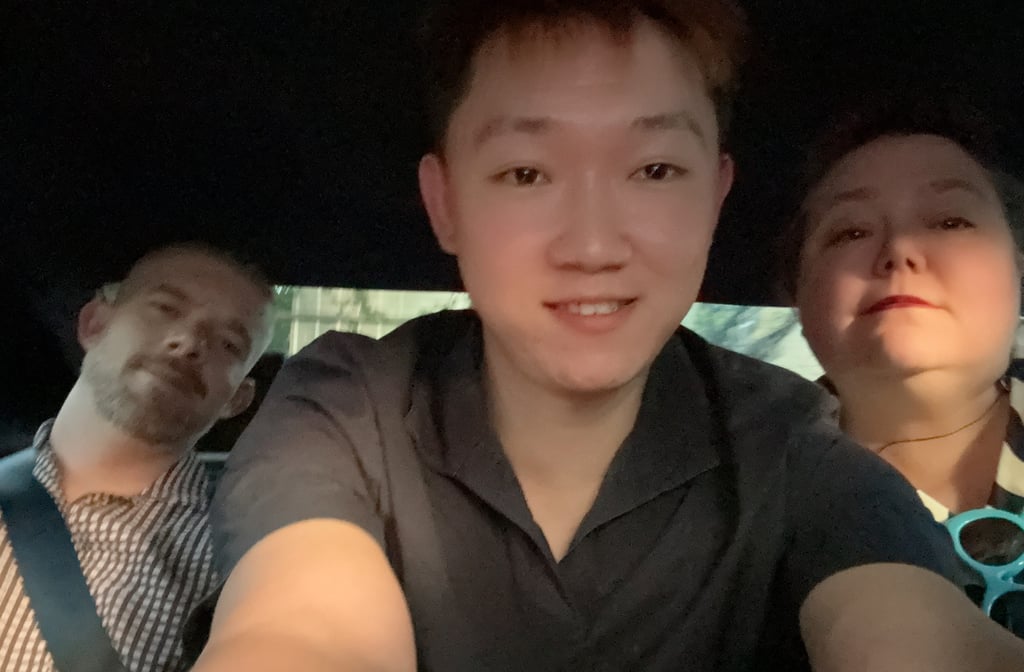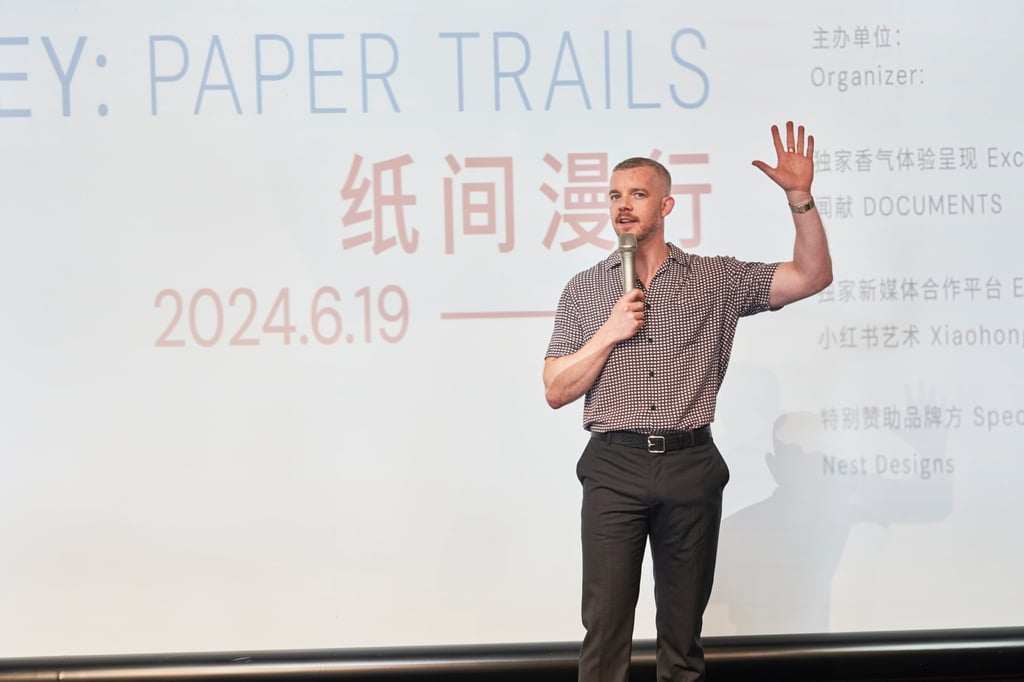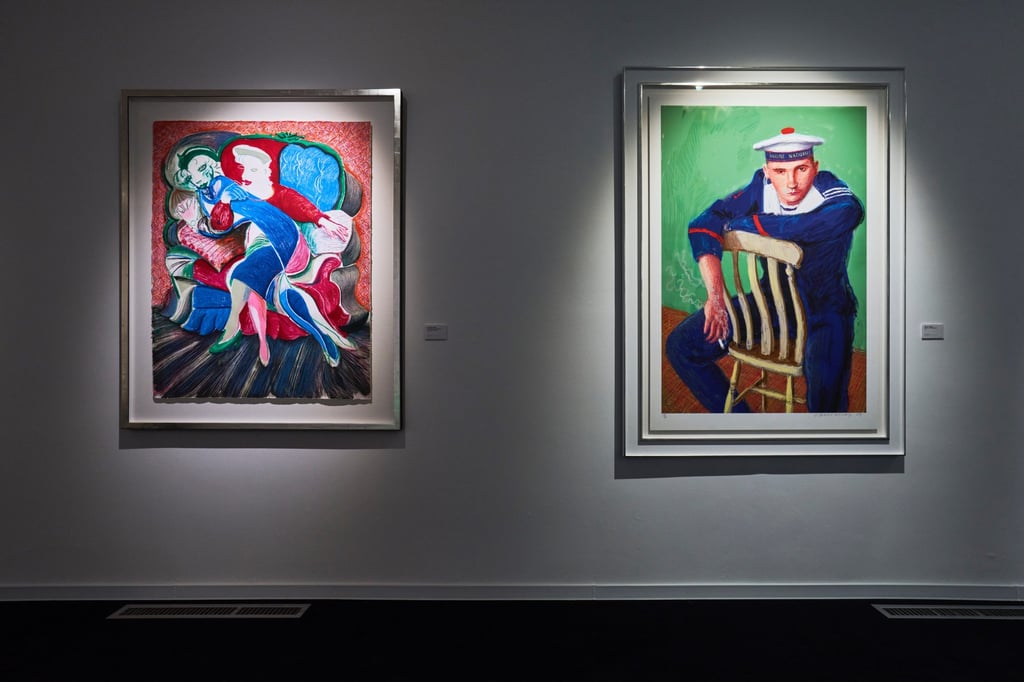In China he has garnered a loyal following, especially through his portrayal of a werewolf in the BBC series Being Human (2008-12). In Mandarin, he is affectionately known as Xiaolang (Little Wolf).

“It’s very clean and futuristic,” he says of his first impression of Pudong, as we are stuck in traffic.

A few hours earlier, Tovey was at the opening of “David Hockney: Paper Trails”, an exhibition he co-curated at the Shanghai Modern Art Museum (MAM).
As Shai Baitel, artistic director of MAM, explains, the medium is “central to Hockney’s practice”, as it allowed him to experiment and develop ideas before translating them into larger works.
While the sheer volume – over 100 works – and breadth of the art on display is a compelling reason to visit the exhibition, the show has a deeper significance, combining as it does the work of a world-famous queer artist and a celebrity queer curator and opening in Pride Month; this is particularly significant in a city where queer identity and queer art remain largely hidden.
The Shanghai art scene is very, very gay – but carefully so
Hockney came of age when homosexuality was still criminalised in Britain. Despite societal restrictions, he desired to live openly as a gay man. His art became a powerful tool for self-expression, and a protest against the restrictive social climate.
For example, one of the works on show features a sailor staring provocatively at the viewer. While Matelot Kevin Druez 2 (2009) is not as explicitly about gay life as, say, his Peter Getting out of Nick’s Pool (1966), it can be seen as a coded depiction of desire that still needs to be disguised in many cultures.
“Generally, his portraits are about love that we can all connect to,” Tovey says.

As our cab crawls through the former French Concession, and we observe the ongoing transformation of Shanghai’s cityscape, Tovey’s curiosity turns towards the city’s LGBTQ art scene. My friend along for the ride, Shanghai art writer and fellow Post contributor Lisa Movius, is able to fill him in.
Movius describes the raucous closing party of Shanghai lesbian bar Roxie just two nights earlier – the latest blow in a shrinking of gay public spaces in China.
“It stems more from growing official discomfort with independent, grass-roots communities than conservative sexual mores,” Movius explains.
“The Shanghai art scene is very, very gay – but carefully so,” she tells Tovey. “Shanghai’s glitz is a gay magnet for the rest of China, as well as a respite from Beijing’s dominant cis-heteronormative machismo. Many artists plus museum, gallery and art fair owners, directors and staff here are openly but quietly queer.”
Some reflect that in their projects, while others keep their personal identities more private.
“Publicly, most China exhibitions ‘straightwash’ LGBTQ+ artists, often far more than they actually need to. A few brave venues (Movius says it is not safe to openly identify them) “proactively include queer artists and content and manage to push into the censorship grey area with subtle winks of meaning and workarounds, like different local and overseas press releases.
“There is a lot happening here, but you have to know where to look.”
At last, we reach our destination. The sky is darkening, yet Anfu Road remains as vibrant as ever.
Their courage in advocating for the LGBTQ community during less accepting times paved the way for greater acceptance today
Capsule Shanghai, established by Italian gallerist Enrico Polato, has consistently championed LGBTQ artists in China. Operating discreetly, the gallery hosts numerous gay-themed exhibitions that showcase emerging talent.
The current solo exhibition, “Revisit”, features the work of Los Angeles-based Chinese artist Yan Xinyue. One of the paintings catches Tovey’s eye – a depiction of the artist wearing an LED-light facial mask while lying on the floor.
Tovey jokes: “I also wore a mask like this during lockdown; it helps with the wrinkles.”
The gay community in Shanghai knows when to be subtle and when to scream. While there is no public Pride celebration in Shanghai this June, the opening reception of the Hockney show soon turns into a de facto Pride party.
Charles Ren, a consultant and a young patron of the Beijing-based UCCA Center for Contemporary Art, points out at the party that the artist’s biography in China often omits Hockney’s involvement in the Aids crisis and mention of his sexuality.

He says he hopes Tovey’s involvement in curating the exhibition will help attract a larger audience and promote discussion and perhaps more understanding in a city where there is little chance of it happening publicly.
As a long-time fan of Tovey since his university days, he proudly shows me a photograph taken with the actor outside a Broadway theatre in New York in 2013.
Ren says both Hockney and Tovey profoundly influenced him as he navigated his own identity: “Their courage in advocating for the LGBTQ community during less accepting times paved the way for greater acceptance today.”
Tovey, who tells me he never expected to be that well received in China, says he is glad to be able to use his influence to help people through his work and art.
“The more people that tell you, ‘Hey this is for you, you can enjoy this as much as I enjoy it,’ that’s a brilliant message [that can help people] find the people who are out, talking about their lives and showing you what it is to live authentically, so you can find inspirational bravery from them.”
“David Hockney: Paper Trails”, Modern Art Museum, 4777 Binjiang Avenue, Pudong New Area, Shanghai. Until September 10.

